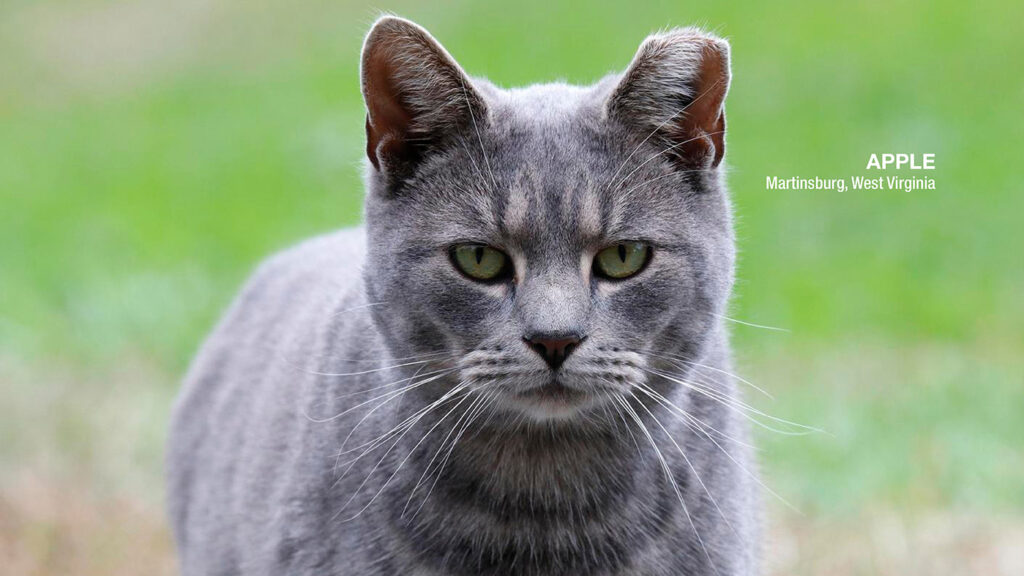
Alley Cat Allies is compelled to address the shockingly biased and dangerously misinformed portrayal of Trap-Neuter-Return (TNR), community cats, and the people who protect them in the article ‘How the ‘No Kill” Movement Betrays Its Name’ published in The New Yorker.
The “article,” which should be labeled an opinion piece, uses debunked and antiquated studies to advocate for lethal control of cats outdoors, all while desperately downplaying the only humane and effective approach—Trap-Neuter-Return (TNR)—and condescending to or downright insulting the people who do the real legwork to benefit cats and communities.
Writer Jonathan Franzen purports various cynical, imagined reasons why our movement calls unowned cats who live outdoors “community cats.” We’re here to clear the air: Community cats, who live and thrive in their natural outdoor homes among us, are called such to acknowledge their thousands of years of history as members of our communities.
Community cats are bonded to their outdoor homes and to their feline families, and they are not generally candidates for adoption. TNR acknowledges their nature, their biology, and their inherent value as beings deserving of respect and protection by allowing these cats to continue their lives in familiar surroundings while ensuring their population stabilizes.
TNR is the ONLY evidence-based, humane, and effective approach to cats outdoors. Spaying or neutering means fewer kittens born outdoors and the reduction of behaviors associated with mating—including yowling, spraying, fighting and roaming. Additionally, vaccinations provided during TNR improve the cats’ health and address community health concerns—though it’s critical to note that cats are extremely unlikely to spread rabies, toxoplasmosis, or any other diseases. The success of community TNR programs is studied and documented.
TNR is also the primary way community cats with other medical issues receive the care they need— despite Franzen hammering in the idea that all cats are suffering outdoors (there’s a sinister motive for this, as we’ll describe later), community cats are generally healthy and in good condition and live as long and fulfilling of lives as indoor cats.
Developing objective, science-first best practices aimed at humane care for animals, building peaceful communities, and protecting all species should be the top priority in our modern world. That is why Trap-Neuter-Return (TNR) has become mainstream practice. Beyond saving cats’ lives, TNR is sound public policy that reduces calls to animal control, reduces the number of cats entering shelters, and reduces taxpayer expense, all while meeting the demands of the public for effective, meaningful, AND lifesaving action for cats in their communities.
Franzen writes about TNR as under-resourced in far too many communities. The logical solution would be for local governments to devote more resources to TNR to improve its reach and efficacy rather than continue to waste money on ineffective lethal schemes. Franzen’s conclusion, though, is that lack of resources means TNR will never work. He believes cats should be killed—and his portrayal of cats as constantly suffering outdoors is meant to justify lethal schemes.
TNR opponents’ proposed “alternatives” to TNR come down to rounding up and killing cats over and over and over again. However, trapping cats and “euthanizing” them in shelters is not some untested idea; it was the status quo for decades and failed miserably due to the Vacuum Effect—a phenomenon in which other cats move in to take advantage of the resources that sustained the colony that was removed. Alley Cat Allies launched TNR into the mainstream against a backdrop of endless, futile, and cruel catch and kill cycles in the United States, and we were successful because communities recognized the need for change. They saw that compassionate and humane approaches worked.
Franzen, like many in the anti-TNR crowd, cites the same debunked junk “science” that keeps coming back to haunt us within so-called “factual” articles. That “science” is an exercise in Olympic gymnast-level contortion to fit the findings of older studies into a pre-determined conclusion that cats are a major threat to birds and other wildlife species.
Cats have an important place in ecosystems, and whenever they are removed in large numbers, the consequences are dire—not just for the cats but for local wildlife. The reality is cats are not a major threat to wildlife species, endangered or otherwise, and the “science” that claims such is heavily flawed and funded by fringe interests and biased parties. As we have seen time and time again, catch and kill leads to nothing but an endless cycle of expensive and morally bankrupt slaughter that does not benefit cats, community, or wildlife.
But, on a positive note, the reality is also that we can protect both cats and wildlife. The interests are not mutually exclusive. By advocating for stronger TNR programs backed by local governments AND policies that curb human-led activities that are the true threats to wildlife—like habitat destruction and pollution—we improve the lives of cats, wildlife, and us all.
Like all worthwhile goals, communitywide effort is the key to humane and effective programs and policies. Rather than condescending and stereotyping cat caregivers, as Franzen does repeatedly in his article, Alley Cat Allies supports them with humane education on best practices for TNR and community cat care. Rather than give community leaders an excuse to give up on humane programs and utilize taxpayer dollars on an endless cycle of killing cats, we push them to work WITH members of their communities and allot funds to what their people believe in—which overwhelmingly is non-lethal approaches.
It’s time for communities, local governments, and media outlets like The New Yorker to stop wasting words, space, money, and time on calls to backtrack to the dark ages of killing cats and kittens endlessly. TNR is the only way forward.

